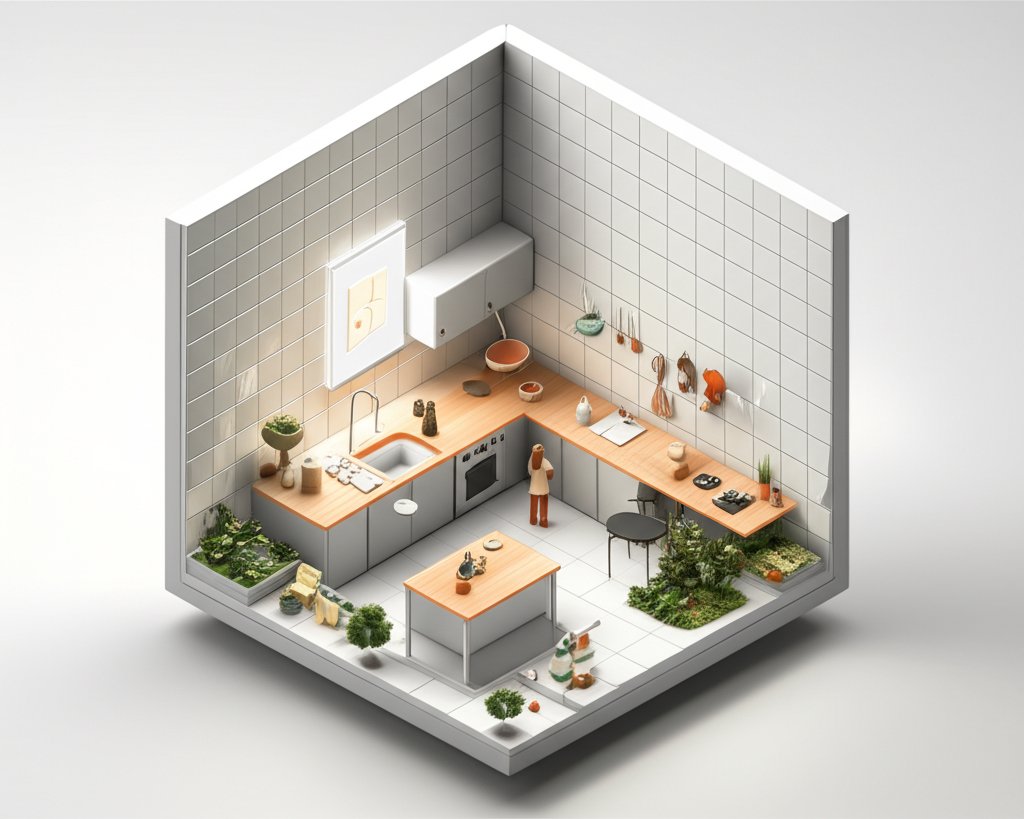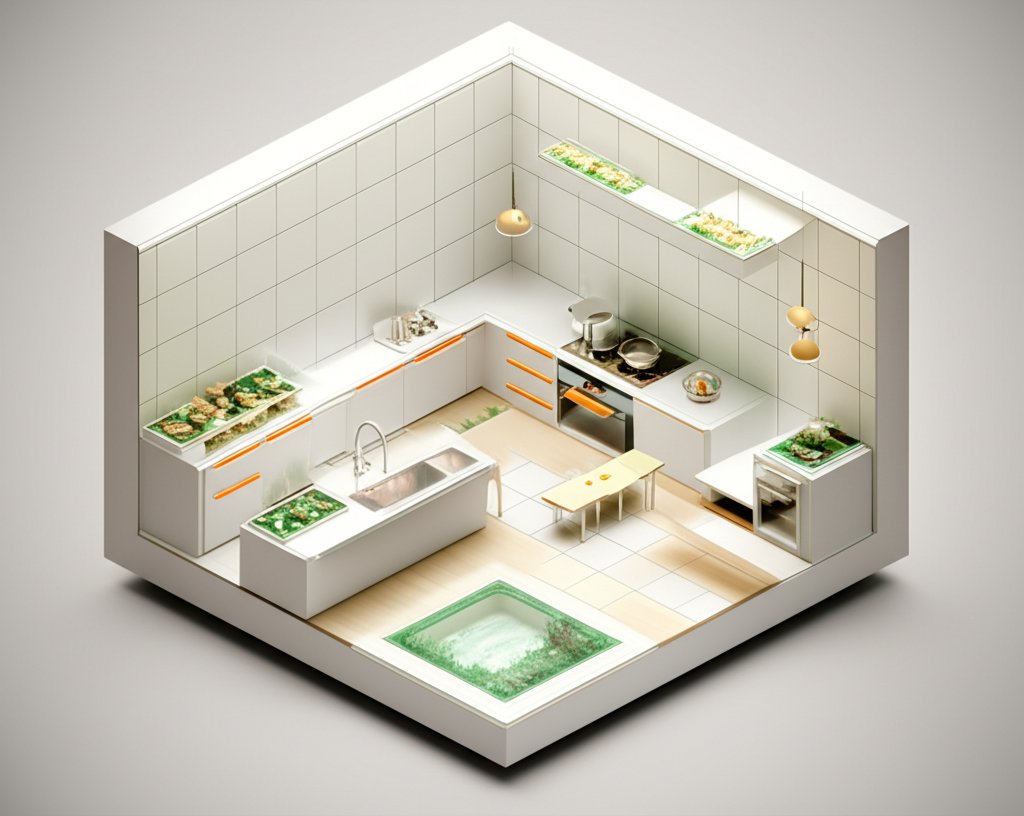A white tile backsplash kitchen offers timeless appeal, but the sheer variety of options can be overwhelming. From sleek, modern slabs to the rustic charm of handcrafted tiles, the details make all the difference. This guide helps you navigate the choices and create a white tile backsplash that perfectly complements your kitchen.
At a glance:
- Explore the pros and cons of different white tile materials (ceramic, porcelain, glass, marble, etc.) for your backsplash.
- Learn how grout color dramatically impacts the look of your white tile backsplash, from seamless to graphic.
- Discover creative layouts beyond the standard subway tile, including vertical stacks, herringbone, and geometric patterns.
- Understand the cost factors involved in a white tile backsplash project and how to budget effectively.
- Get expert tips on maintaining your white tile backsplash to keep it looking its best for years to come.
Choosing the Right White Tile Material
The material of your white tile backsplash impacts everything from its durability to its overall aesthetic. Here’s a breakdown of popular choices:
- Ceramic & Porcelain: These are budget-friendly options ($5–$15 per square foot) known for their versatility. Porcelain is denser and more water-resistant than ceramic, making it ideal for areas with high moisture.
- Glass: Glass tiles ($15–$30 per square foot) offer a sleek, modern look and reflect light beautifully. They are non-porous, making them easy to clean.
- Marble: For a luxurious touch, marble is a classic choice. However, it requires sealing to prevent staining and can be more expensive.
- Quartz: Full-slab white quartz backsplashes create a seamless, contemporary aesthetic and are super easy to clean. They are durable and low-maintenance but represent a higher price point.
- Zellige: These handcrafted tiles offer a unique, textured look with subtle color variations that add depth and character.
Decision Point: Consider your budget, desired aesthetic, and the level of maintenance you’re willing to undertake when selecting your tile material.
Grout: The Unsung Hero of White Tile Backsplashes
Grout color significantly impacts the overall look of your white tile backsplash. It’s not just about filling the gaps; it’s about defining the style.
- White Grout: Creates a seamless, clean look, perfect for minimalist or traditional kitchens. It blends effortlessly with the white tiles, emphasizing the overall form rather than individual tiles.
- Dark Grout: Gray or black grout adds contrast and highlights the tile pattern. This is a great option for showcasing a unique tile shape (like square tiles) or an interesting layout (like herringbone). Dark grout is also more forgiving when it comes to hiding stains.
Example: Classic white subway tiles with white grout offer a timeless, understated elegance. The same tiles with dark gray grout create a more modern, industrial-chic vibe.
Creative Layouts and Patterns
White tile doesn’t have to be boring! Experiment with different layouts and patterns to add visual interest to your backsplash.
- Subway Tile: The classic choice, subway tile can be arranged in various ways:
- Horizontal: The traditional and most common layout.
- Vertical: Stacking tiles vertically enhances the perceived height of the kitchen.
- Herringbone: Creates a dynamic, zigzag pattern that adds movement and visual interest.
- Vertical Stack: A modern, minimalist approach that draws the eye upward, making the kitchen feel taller.
- Square Tiles: Offer a clean, geometric look. Pairing them with contrasting grout creates an industrial-inspired edge.
- Chevron: Similar to herringbone but with tiles cut at an angle to create a continuous zigzag pattern.
- Mosaic: Small tiles arranged in intricate patterns. This allows for endless creativity, from simple geometric designs to elaborate floral motifs.
Implementation Tip: Before committing to a layout, use a tile visualizer tool or create a mock-up with a few tiles to see how it looks in your space.
Budgeting for Your White Tile Backsplash
A white tile backsplash kitchen remodel can range in cost depending on materials, labor, and the size of the area. Here’s a general breakdown:
- Materials: As noted earlier, tile prices vary widely: $5-$15/sq ft for ceramic/porcelain, $15-$30/sq ft for glass/mosaic, and higher for marble or custom tiles. Don’t forget to factor in the cost of grout, thin-set mortar, sealant, and any necessary tools.
- Labor: Professional installation can add $5-$10 per square foot or more, depending on the complexity of the job. DIY installation can save money, but it requires time, skill, and the right tools.
- Other Costs: Account for demolition of the existing backsplash (if applicable), disposal fees, and any necessary repairs to the wall behind the backsplash.
Case Snippet: A homeowner chose ceramic subway tile ($6/sq ft) and installed it themselves, spending around $300 on materials for a 50 sq ft backsplash. Another homeowner opted for marble mosaic tile ($25/sq ft) and professional installation ($8/sq ft), resulting in a total cost of $1650 for the same area.
Maintaining Your White Tile Backsplash
Keeping your white tile backsplash kitchen looking its best requires regular cleaning and maintenance.
- Daily Cleaning: Wipe down the backsplash with a damp cloth or sponge after cooking to prevent grease and food splatters from setting.
- Weekly Cleaning: Use a mild detergent or all-purpose cleaner to remove any buildup. For stubborn stains, try a paste of baking soda and water.
- Grout Cleaning: Grout can be prone to staining. Use a grout brush and a grout cleaner to scrub away dirt and grime. You can also use a steam cleaner for a deeper clean.
- Sealing: Seal porous materials like marble and natural stone to protect them from stains. Reapply sealant every 1-2 years, or as recommended by the manufacturer.
Best Practice: Avoid using abrasive cleaners or tools, as they can scratch or damage the tile surface.
Practical Playbook: Quick Start Guide to a White Tile Backsplash Kitchen
- Define your budget: Determine how much you’re willing to spend on materials, labor, and other costs.
- Choose your tile: Consider the material, size, shape, and finish of the tile. Order samples to see how they look in your kitchen lighting.
- Select your grout: Decide on a grout color that complements your tile and desired aesthetic.
- Plan your layout: Experiment with different layouts and patterns. Use a tile visualizer tool or create a mock-up.
- Prepare the surface: Clean and repair any damage to the wall behind the backsplash.
- Install the tile: Follow the manufacturer’s instructions for applying thin-set mortar and setting the tiles.
- Grout the tile: Apply grout to fill the gaps between the tiles.
- Seal the grout (if necessary): Protect the grout from staining by applying a sealant.
- Clean the backsplash: Remove any excess grout or thin-set mortar from the tile surface.
Decision Tree:
- Budget under $10/sq ft: Opt for ceramic or porcelain tile.
- Want a modern, easy-to-clean look: Choose glass or quartz.
- Desire a luxurious, classic style: Consider marble (be prepared for maintenance).
- Seeking a unique, handcrafted feel: Explore Zellige tiles.
- Want a seamless, minimalist look: Use white grout.
- Want to highlight the tile pattern: Use dark grout.
Quick Answers: White Tile Backsplash FAQs
Q: Is a white tile backsplash too boring?
A: Not necessarily! White is a versatile backdrop that allows you to get creative with textures, patterns, and grout colors. Plus, white is timeless and won’t go out of style.
Q: Will a white tile backsplash show every little stain?
A: White tiles can show stains more easily than darker colors. However, regular cleaning and sealing (for porous materials like marble) can help prevent staining. Dark grout can also help camouflage stains.
Q: What are the most durable white tile options?
A: Porcelain, glass, and quartz are all highly durable and low-maintenance choices for a white tile backsplash.
Q: Can I install a white tile backsplash myself?
A: If you have experience with tiling and are comfortable using tools, you can install a white tile backsplash yourself. However, if you’re not confident in your skills, it’s best to hire a professional installer.
Q: How do I choose the right white tile for my kitchen?
A: Consider the overall style of your kitchen, your budget, and the level of maintenance you’re willing to undertake. Order samples and see how they look in your space before making a decision.
A white tile backsplash kitchen offers incredible design flexibility. From the subtle variations in handcrafted Zellige tiles to the sleek expanse of a quartz slab, the options are vast. The key is to choose a tile material, grout color, and layout that reflects your personal style and complements your kitchen’s overall design. To further explore contemporary design ideas and inspiration for white backsplashes, Explore White Backsplash Designs for more.

- White Tile Backsplash Kitchen: A Classic and Clean Design - November 17, 2025
- Backsplash For White Cabinets: Choosing The Right Kitchen Style - November 16, 2025
- White Kitchen Backsplash Ideas For a Timeless, Stylish Update - November 15, 2025










